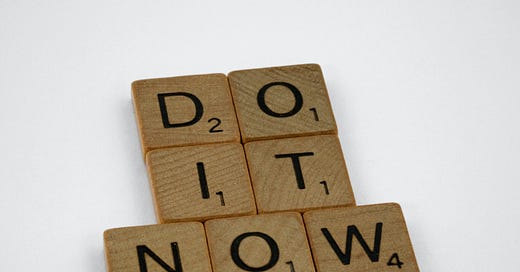Goal Setting for the Creative Process
A framework for publishing more in one year than the rest of your life combined.
Dear Friends,
Presenting “Goal Setting for the Creative Process”—a framework for publishing more in one year than the rest of your life combined.
This week, Sahil Bloom published "The Goal Setting Guide," a framework for successful goal setting. As usual, he presents a better, clearer way to think – and his framework is simple to understand.
Sahil’s framework is powerful for setting goals in any category. But it’s invaluable in one specific category: the creative process.
Like Sahil, I’ve set and failed to achieve a lot of goals. Especially creative goals. So I deconstructed creative goal setting, and what I learned maps to Sahil’s conclusion.
Consistent creative production, like consistent goal achievement, is never an accident. Across every category, the key is the same: establishing process goals. In Sahil’s words, “2-3 daily actions that create tangible, compounding progress.”
Last month I rebuilt my creative process around a new framework. My framework is a variation of the Goal Setting Guide (GSG)—but optimized for creative work.
My creative framework has three parts:
My Posture & Priorities
My Daily Process
My Creative Rhythm
It works like the GSG, but with a few twists. Let’s walk through each part…
Part 1: Posture & Priorities
This establishes goal categories. You can choose health, career, education, relationships, finance, leisure, etc.
Per Sahil’s GSG, for each category, you need:
1 big goal
1 medium-term goal
2-3 daily process goals
Here’s a twist and why I call it a Posture & Priorities statement...
If your goals aren’t clear on all levels, you need to unlock yourself. That means zooming out and writing "top matter." (You won't need this once you're clear on all levels)
Top Matter 1. Unify your goals into a mission, and write it in plain english: Example: I help people become better and more prolific creators (and I build personal leverage to help more people).
Top Matter 2. Write the approach you take to achieving your mission. Example: I’m optimistic about life and focused on the next ten years; I’m systematic about learning and committed to a daily rhythm; and I’m relentless about publishing and surrounded by creative people.
Top Matter 3. Collapse goals together and state them as a mantra: Examples:
Commit to a Daily Rhythm (“Live like a clock”)
Optimize for Creative Work (“Sleep on the factory floor”)
Surround Myself with Creators (“Inhabit the frontier”)
Layout your Posture & Priorities on a single page. Sahil wrote, "Never establish over three daily process goals." I believe that's true, so for health, career, and education I collapse daily process goals to three.
Part 2: Daily Process
Daily requirements are things I do every day that make other things take care of themselves. Enforcing daily requirements “imposes discipline that accumulates to results,” as Jim Collins puts it.
My Daily Process Goals are:
Run/walk 15k+ steps or exercise equivalent
Do three hours of focused, creative work
List top 3 problems I can solve in <30 min, and solve the most important
Part 3: Creative Rhythm
The elements of my Creative Rhythm aren't required on a daily basis. But they count toward and help me meet the daily process goal of creative work. I do them most days, in the same way I put on shoes and go outside.
My Creative Rhythm is:
Write longhand freely (250 words)
Add Book of Wisdom notes (three thoughts worth keeping)
Format a reference (one source worth keeping)
Excellent criteria for daily process goals and requirements:
If you can prove you met similar daily requirements in the recent past
If you meet your daily requirements, you'll meet my yearly goals
I believe Goal Setting for the Creative Process is a framework for consistent creative production. And a foundation for anyone setting creative goals.
Thank you for reading!
If you like this, share it!
If you want more posts, please do sign up for the email:
And follow me on Twitter!
Sincerely,
Justin







